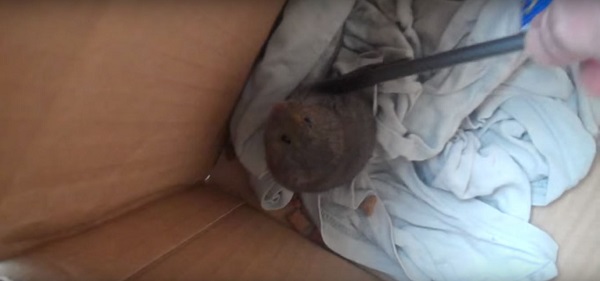Mice can be found in different sizes depending on their species and availability. Most of the time, the mice length can be
from 9cm up to 30cm in total.

The house mouse, called mus musculus, has a size which is around 6-10cm from the head to the tail, and it can be found throughout the entire
world. The lesser Egyptian gerbil (gerbillus gerbillus) mouse has a length which is around 20cm. It is a type of mouse which can live near the
palm groves, and it can be found in both urban and cultivated regions. Wagner’s gerbil, also known as gebrillus dasyurus, is a medium sized
mouse that lives in the mountains. It has a length that is around 8.4 to 14.5cm. The head to body length is around 7-11cm. They are a species
that live in different areas, and this includes the mountain areas that are up to 2000 meters high and also in desert, semi-desert and rocky
hills.
The Turkish spiny mouse and Asia Minor (acomys cillicius) have at least 10 cm in length starting from the base of the tail to the head. It is found
mostly in the temperate forest, desert, rocky and dry area. The Arabian spiny mouse, also called acomys dimidiatus, is most of the time found in the
dry, rocky areas, and it has a head and body length of around 7-17.5 cm, while the tail can reach from 4.2 to 12.5 cm in length. The Greater Egyptian
gerbil is also called gerbillus pyrmadium. It is the largest gerbil found in Egypt and it can be 10-14cm in length starting from the head–body, and the
tail length can be 12-18 cm in its length. They are found mostly in the sandy desert areas.
The Northern hopping mouse is also called notomys aquilo. It is a nocturnal rodent which originated from Australia. It is the same size as a rat and is
at least 11.2cm in length from the head to the tail, while the tail itself can reach up to 17.3cm. This mouse likes to live in a broad range of shrub
lands, grasslands and coastal areas. The dusky hopping mouse is found in plans or sand dunes. It can also be spotted in grasslands or wooded areas. A
fawn hopping mouse is also known as notomys cervinus, and it lives in the arid Australian outback. The mouse is at least 9.5cm in its length, and the
tail to body length is around 12-16cm.
The Camiguin forest mouse, also called apomys camiguienensis, is among the two endemic mice of the tiny island of Camiguin City in the Philippines. The
Camiguin forest mouse has a length of around 24-26 cm while the tail length is over 14-16cm. This mouse is found in the wet, cold and steep mountains or
in mossy forests.
The Shark Bay mouse, also called pseudomys fieldis, lives in coastal sandy places and in the dune vegetations. The body to head length is over 9.5cm and the
tail may reach up to 12cm. The greater big footed mouse is also called mactrotarsomys ingens. It is a gerbil like mouse which has larger eyes and nocturnal
behavior. The mouse has a head-body length of 115-150mm, and the tail length is around 190.240mm. This mouse is only found in the deciduous and dry forests.
Go back to the
How to get rid of mice in the attic home page. You might also want to read about
how to kill mice and why the use
of snap traps is better than
mouse poison. Read an analysis of the different types of traps and how to use them on the
how to trap mice page.
Learn why
bait is not as important as trap type, placement and location. Also read a full analysis of
mouse repellent to understand why it
never works. If you see droppings and want to identify them, read the
mouse poop page. If you need to hire professional help, read about
how much does mouse removal cost?
or you can read this site to learn how to do it yourself. Feel free to email me about How big the mice can get